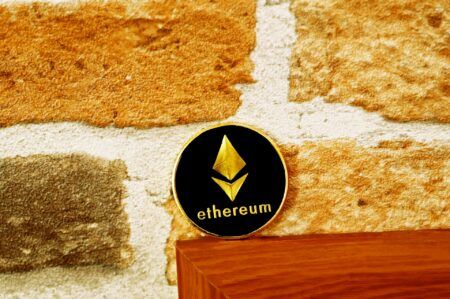On Friday (September 23), Arthur Hayes, Co-Founder and former CEO of BitMEX, talked about how he expects the Ethereum ($ETH) price to change in the next few months.
In a blog post published yesterday, Hayes said:
“As I have said in various interviews, the only thing that I believe matters in the short term (i.e., the next three to six months) is how ETH issuance per block falls under the new Proof-of-Stake model. In the few days post-merge, the rate of ETH emissions has dropped on average from a +13,000 ETH per day to -100 ETH.
“The price of ETH continues to get smoked due to deteriorating USD liquidity, but give the changes in the supply and demand dynamics time to percolate. Check back in a few months, and I suspect you’ll see that the dramatic reduction in supply has created a strong and rising floor on the price.
“I wrote previously that I purchased $3,000 strike ETH/USD December 2022 call options. I fear I might not have enough time left to get into the money on those options…
“Is the removal of almost $2 billion in sell pressure enough to cause the price to more than double in a little over three months from now? If my USD liquidity index turns higher, then maybe I stand a chance. But hope is not an investment strategy. I most likely overestimated how quickly the reduction in supply would translate into higher ETH fiat prices.
“Versus Bitcoin, I am confident that ETH will continue to outperform. The cleaner trade would have been to buy options on the ETH/BTC cross. But I already had that position in the physical, and I like trading, so I went for it.“
On September 15, the day that Ethereum completed its Merge upgrade, marking its transition from proof-of-work (PoW) to proof-of-stake (PoS) consensus, Silicon Valley based venture capital firm Andreessen Horowitz (“a16z”), explained why “Ethereum is a far superior blockchain now than it was before.”
Andreessen Horowitz, which was founded in 2009 in 2009 by Marc Andreessen and Ben Horowitz, is a venture capital firm that “backs bold entrepreneurs building the future through technology.” It claims that it is stage agnostic, investing in “seed to venture to late-stage technology companies, across bio + healthcare, consumer, crypto, enterprise, fintech, games, and companies building toward American dynamism.” a16z has “$35B in assets under management across multiple funds.”
In a blog post published on Merge Day, Ali Yaha, a General Partner at a16z, called the Merge “an insane feat” since this upgrade “involved hot-swapping the most important component of Ethereum’s architecture – its consensus mechanism – *while it was running*.” Yaha noted that “all this occurred while maintaining perfect uptime for millions of users, thousands of decentralized applications (dapps), and hundreds of billions of dollars secured.”
Yaha then said that were some of the main advantges of Ethereum’s move to PoS consensus:
- “Post-Merge, Ethereum is now 100x+ more energy-efficient than it was before. Participating in consensus no longer expends the enormous amount of electricity that PoW does. After The Merge, energy usage of ETH will be comparable to the datacenters of web2.“
- “PoS has direct access to each validator’s “stake”, the funds, or skin-in-the-game, that validators deposit to secure the network. That allows PoS incentives to be far more granular, further increasing security.“
- “… anyone with 32 ETH can now participate as a validator on Ethereum.“
- “On a PoS blockchain, transactions that go through consensus are final… Transaction finality on Ethereum will lay the groundwork for future work that will improve Ethereum’s ability to scale (via “layer 2” solutions such as rollups), connect to other blockchains (via cross-chain bridges), and build better abstractions for developers that are easier to use and reason about.“
He also mentioned that the Merge is “a big deal” that “brings us closer to a world that benefits from an efficient and secure layer for decentralized computation that can support the applications we all want to build.”
Image Credit
Featured Image via Pixabay









